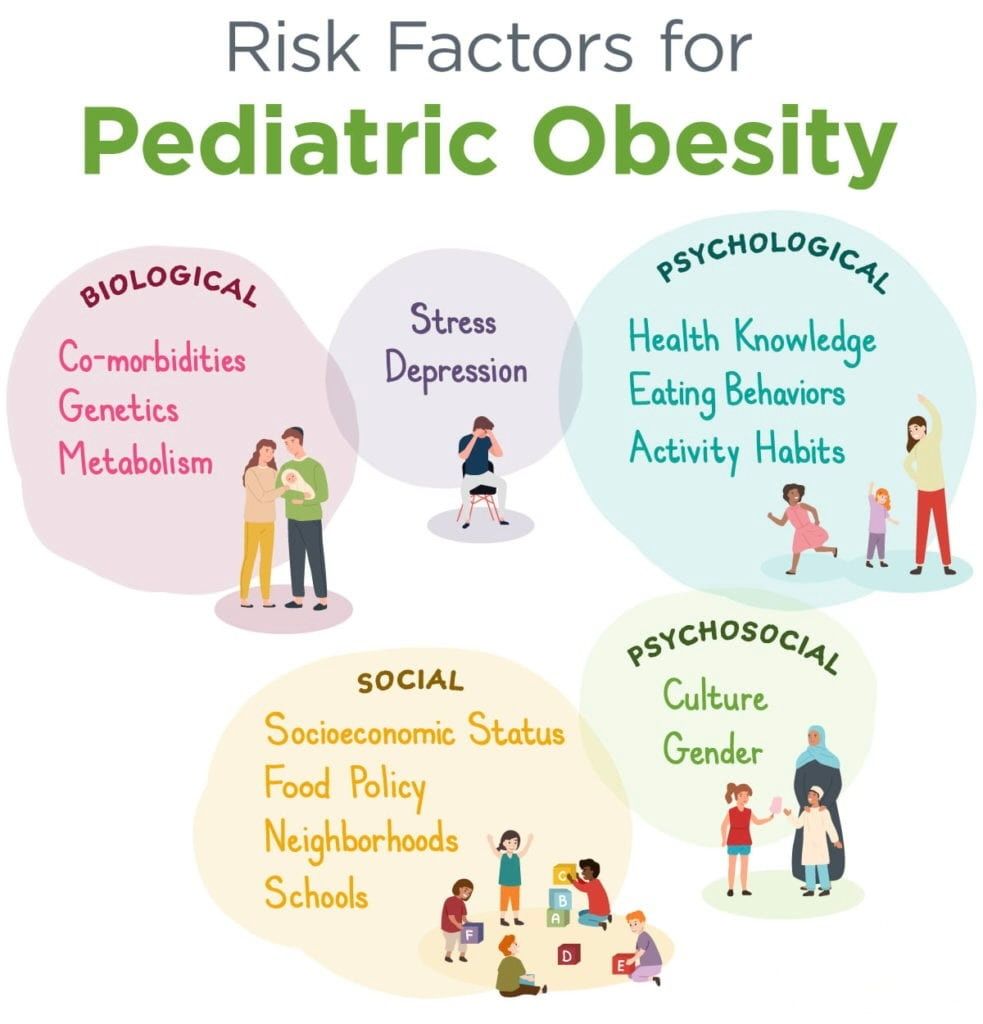Childhood Obesity
Childhood obesity is a growing health problem in young children.
Obesity is a complex and often persistent condition involving an excessive amount of body weight that affects the health of over 14.4 million children and adolescents, making it one of the most common pediatric chronic diseases in the United States.
Usually, unhealthy weight gain results from inherited, physiological and environmental factors, combined with diet, physical activity and exercise choices.
- Researchers say the rate of childhood obesity in the United States continues to increase. The prevalence in the U.S. is about 20% (about one in five kids), according to the CDC.
- In September 2021, a report from the CDC found the rate of body mass index nearly doubled during the pandemic in almost half a million U.S. kids between 2 and 19 years old.
- Parents, doctors, and educators can all play a role in helping children eat a healthier diet and exercise more often.
What causes unhealthy weight gain in childhood ? Childhood obesity is a complicated disease that has many contributing factors. It’s not just laziness or a lack of willpower.
- Diet. Regularly eating high-calorie foods, such as fast foods, baked goods, vending machine snacks, candy and desserts can cause unhealthy weight gain, more evidence points to sugary drinks, including fruit juices and sports drinks, as culprits in some people.
- Lack of exercise. Too much time spent in sedentary activities, such as watching television or playing video games, also contributes to the problem. TV shows also often feature ads for unhealthy foods.
- Family factors. If your child comes from a family of people with weight problems, he or she may be more likely to put on weight. This is especially true in an environment where high-calorie foods are always available and physical activity isn't encouraged.
- Psychological factors. Personal, parental and family stress can cause children to overeat to cope with problems or to deal with emotions, such as stress, or to fight boredom. Their parents might have similar tendencies.
- Socioeconomic factors. Lower income neighborhoods may have limited resources/access to supermarkets with healthy options and might not have access to a safe place to exercise.
- Certain medications. Some prescription drugs can increase the risk of gaining an unhealthy amount of weight. They include prednisone, lithium, amitriptyline, paroxetine (Paxil), gabapentin (Neurontin, Gralise, Horizant) and propranolol (Inderal, Hemangeol).
Complications from childhood obesity:
- Asthma
- Sleep apnea
- Type 2 diabetes.
- High blood pressure (hypertension)
- High cholesterol
- Heart disease
- Stroke
- Musculoskeletal disorders such as osteoarthritis
- Certain cancers, including colon cancer and breast cancer
- Fatty liver
- In addition, children who have obesity are at a higher risk of experiencing:
- Bullying
- Social isolation
- Low self-esteem
- Depression
What can be done?
Increasing access to healthy foods as well as adequate physical activity. Prevention is more effective than playing catch-up later. Previous treatment guidance for providers had focused on a "watchful waiting" strategy or delaying treatment to see if a child or teen can "outgrow" unhealthy weight gain on their own.
Research suggests that traditional approaches to treatment may not be as effective as previously thought and new strategies are necessary to tackle this growing problem. The AAP recently published its first comprehensive guidance recommending early and more proactive treatment which includes medications and surgery for some young patients. Health problems that come with obesity pile up over time. Living with obesity and the associated health problems become harder to treat, therefore, a more aggressive approach may be recommended in some cases.
Source: AAP, CDC

